
Professor Laura Leibman of the awesomely named Early American Graveyard Rabbit blog took wonderful pictures of the old Spanish-Portuguese graveyard in Amsterdam, the Beth Haim Ouderkerk. Funny times we live in: this cemetery has a web site.
First, as she explains, the building in which the men are seen is a funeral home of sorts (as we conjectured in the comments). It was a "House of Rounds," or Casa de Rodeos or Rodeamentos, as they were (are? hopefully) known. The "Rounds" are the very hakafot! Such a building was where the bodies were prepared for burial (the tahara), and where the circuits around the body took place. Picart drew the interior of the Beth Haim Ouderkerk's Casa de Rodeos, which was built in 1705 and still stands. Here is a photograph taken by Leibman:
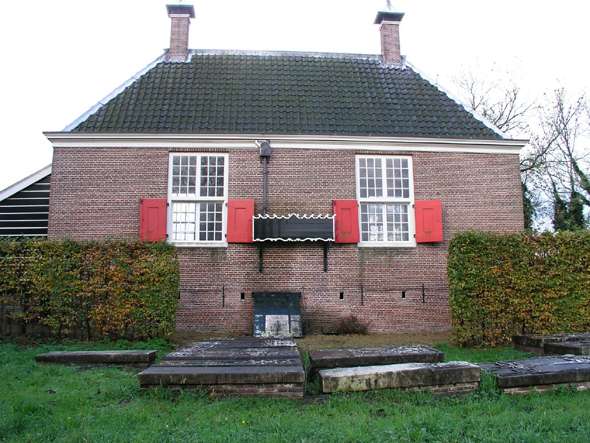
Even better, she took a beautiful picture of the plaque itself:
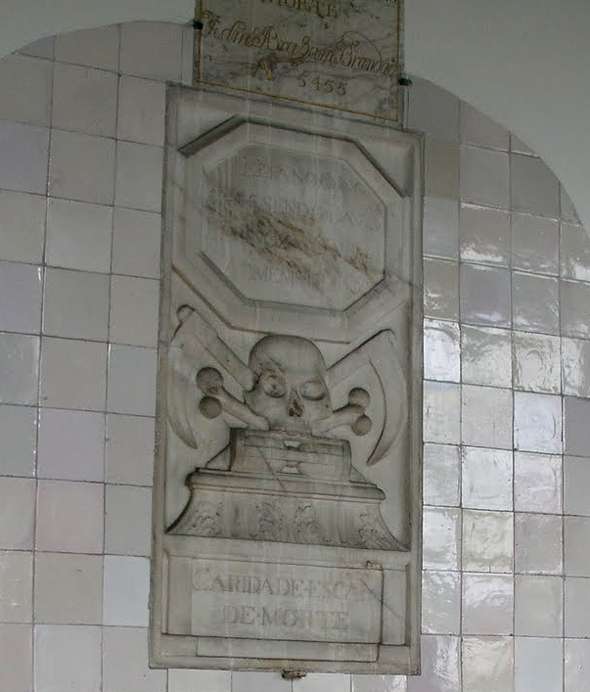
(If you click the image you will see it at a much higher resolution as well as many more details, such as sinks, another inscription, etc.)
Prof. Leibman is quite the connoisseur of old cemeteries and her blog is a must visit. But she also posted many photographs taken in the Jewish Hunt's Bay Cemetery in Jamaica (the subject of the first post in this series). Here are two of her photographs:
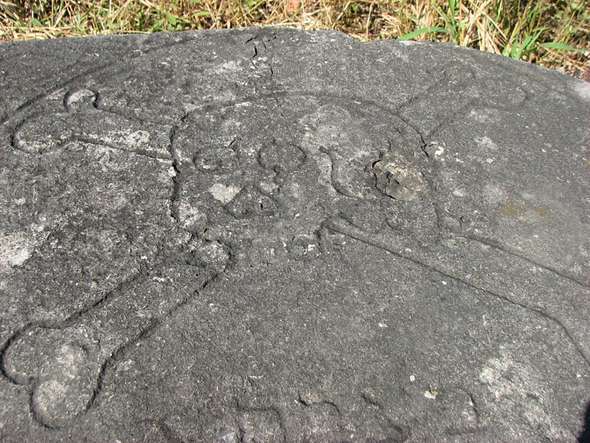
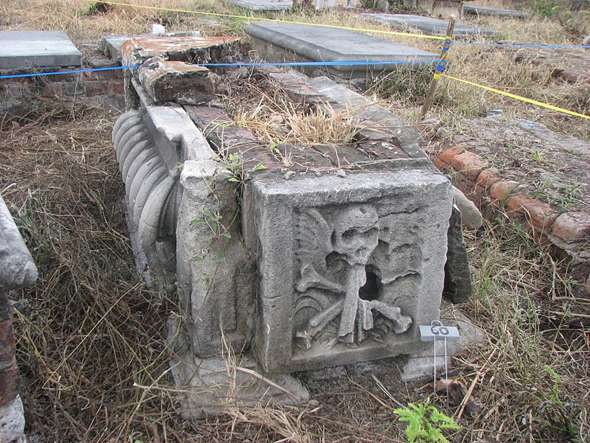
The first is the same grave shown in the Flatbush Jewish Journal (original post), and the second is surely one of the other graves in the same cemetery mistakenly presumed to be those of Jewish pirates.
Finally, just to point that the skull imagery was not only used by bewigged Western Sephardic assimilators, here is one from Frankfurt 1740, the same Kehilla Kedosha which the Chasam Sofer would proudly refer to all his life in his signature משה הק' סופר מפפ"דם:

Detail:
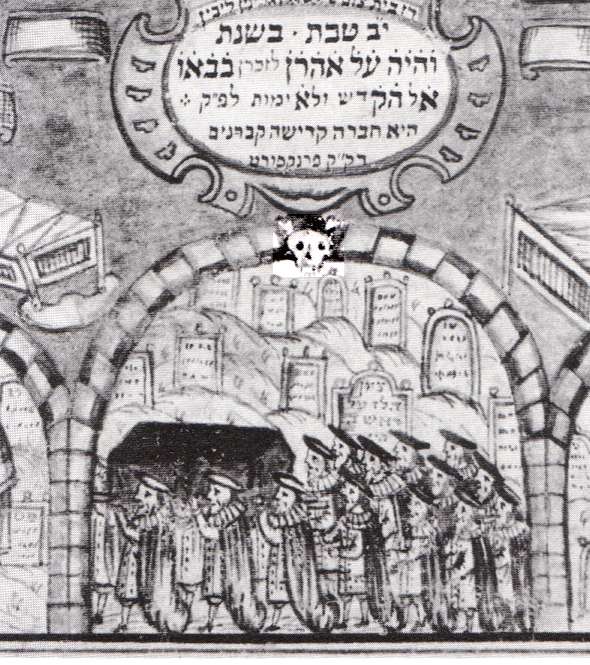
The above image is from a selichos manuscript written in 1740 and used by the Chevra Kadisha of Frankfurt. In the mid 18th century there was a Jewish revival of manuscript writing, and many beautiful hand written and illustrated siddurim and the like date from that era.





For some reason, the skull in the bottom picture looks photoshopped in. (The background is whiter than the rest of the picture.) But in the un-enlarged picture, that doesn't appear.
ReplyDelete-Phil
The "some reason" is that I enhanced it to make it contrast more with the background.
ReplyDelete